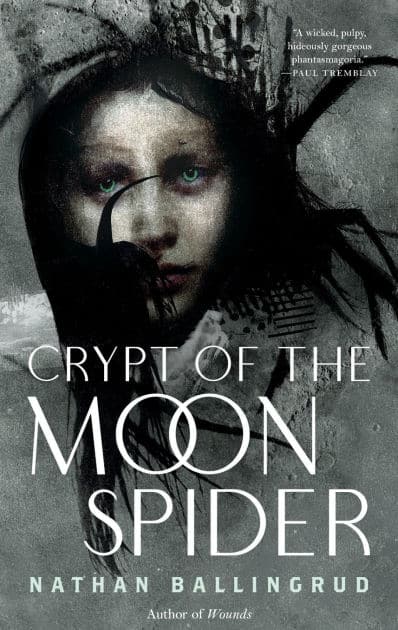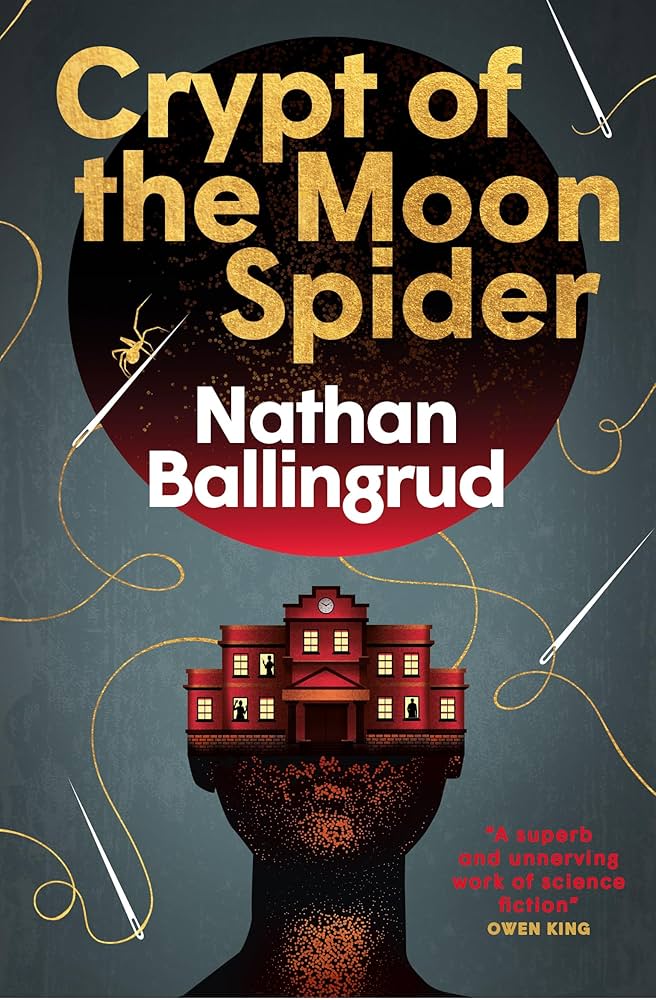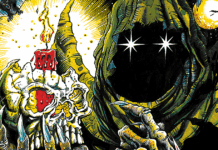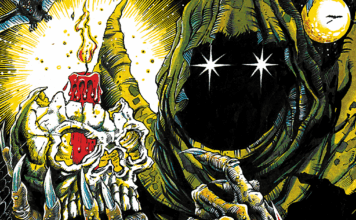Author Nathan Ballingrud is a grand master of the weird. His short stories in particular are some of contemporary horror’s finest because of how deeply they commit to the stranger aspects of both humanity and the supernatural. In one of his stories, titled “The Monsters of Heaven,” a man whose son has been kidnapped stumbles upon a wounded angel. He brings it back home to tend to it, but his inner pain and the reality-shattering realization that angels exist unlock a world of unsettling possibilities within him that come with unexpected consequences. Heartbreak, horror, weirdness. The Ballingrud method.
This approach to story is on full display in his novella Crypt of the Moon Spider, a tale that centers on madness and the darkness we entertain while finding a cure for it. Set in a Bradbury-esque sci-fi version of 1923, it centers on one Veronica Brinkley, a woman suffering from acute depression as her husband drops her off at the Barrowfield Home for Treatment of the Melancholy.
The asylum was built on the moon, near a cave where a giant spider whose webbing contained mind-altering properties once lived. Dr. Cull runs the place, a man that lobotomizes his patients and then places spider webs on their brains to manipulate their psyches. But something happens to Veronica after she’s subjected to the procedure, something that can bring about the order of the spider once more.
Ballingrud’s approach to psychological and psychiatric care is filtered through a historic lens that manages to remain timely. It harkens back to early 20th century attitudes towards medical science and their claims on being able to “fix” patients, with some in the community believing they could categorically remove the parts of the brain that caused “problems.” Women were at a disadvantage here as men could sound the alarm on disturbances of the mind when they’re wives didn’t adhere to traditional expectations. Veronica Brinkley falls squarely on this category.
With these themes set up early, Ballingrud proceeds to build upon the Moon Spider’s lore in bits and pieces, dropping decently sized breadcrumbs that lead to more questions than answers. Each new bit of information helps establish a sense of ancient terror, pointing to something that’s not entirely dead and gone yet. Dormant is the better word here. Ballingrud injects some tragedy here to paint the spider as a magical being that we’ve been robbed of, thus complicating the ways we perceive it.
The book also introduces a group of scholars that have a direct history with the spider, presented as acolytes rather than mere exploiters of its powers. They feel as if ripped straight from the pulp novels old as they point to more complex designs involving Barrowfield Home and the secrets held there. They blend in well with the story’s version of the 1920s and stand as a reminder of the time period it’s set in.
Despite the presence of massive ancient creatures and cult-like followers, Crypt of the Moon Spider isn’t just another example of Lovecraft-inspired storytelling. Ballingrud isn’t necessarily looking to create a monstrous sense of fear that inspires readers to contend with an existential threat that drives people insane (as is the case with Cthulhu). Rather, his prose invites readers to spend time with the horror to better understand it.
There’s enough death and body horror here to satisfy all kinds of fans, but the spider is never portrayed as something to run away from, no matter how scary it can be. Its description is more fantastical, inspiring a more unsettling sense of awe. There’s an invitation to contemplate the spider, to consider its existence. This is Ballingrud’s signature, creating spaces where the monster can be studied. Where weirdness can be fully embraced.
Crypt of the Moon Spider is a haunting read whose words are possessed by a dream-like quality that lingers. Its blend of melancholy, mad science, and cosmic secrecy combine for an experience that feels robustly lived in. Ballingrud’s prose is soft and lyrical in parts, brutal and terror-inducing at others. And yet, it is always welcoming. It wants readers to stay and behold its dark wonders, to reach beyond the confines of the book and imagine a universe where the human psyche can be experimented upon by all-powerful arachnids.
Crypt of the Moon Spider is part one of The Lunar Gothic Trilogy, with the second novella Cathedral of the Drowned picking up some time after the events of the first story. Both are available for purchase.












